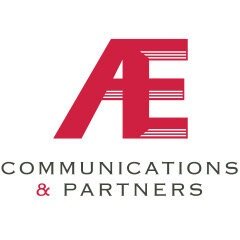Attraction vs Promotion and Setting the Right Expectations
Disappointment is often the result of having the wrong expectations. This doesn’t mean you should lower your expectations to avoid being disappointed. It means you must understand how something works and why, so you can effectively leverage it to set realistic expectations and derive value.
Nowhere is this more true than with the ancient art and science of public relations. I've spent years watching founders and leaders of outstanding companies burn budget because they don't understand the fundamental truth about PR. It’s about attraction, not promotion. It's about having a conversation worth having, one that engages and provokes, rather than how many times your company or product name appears.Or, as we used to say, marketing PUSHES. Public Relations PULLS. Get it wrong and your expectations will be incorrect, your PR will fail, and your report to the BOD will embarrass you.
Let’s break this down...
1. The Marketing Game
- Blast your message everywhere
- Pay to play
- Control the narrative
- Measure in clicks and conversions
- Short-term wins
But here's where it gets interesting...
2. The PR Reality
- Build genuine relationships while maintaining control of the narrative.
- Earn attention and build influence
- Let others tell your story
- Measure in trust and credibility
- Long-term impact
The problem? Most marketers attempt to utilize PR channels for disseminating marketing messages. It's like bringing a megaphone to a dinner party.
𝘗𝘳𝘰 𝘛𝘪𝘱: 𝘈 𝘨𝘰𝘰𝘥 𝘗𝘙 𝘸𝘳𝘪𝘵𝘦𝘳 𝘤𝘢𝘯 𝘸𝘦𝘢𝘷𝘦 𝘵𝘩𝘰𝘴𝘦 𝘮𝘦𝘴𝘴𝘢𝘨𝘦𝘴 𝘪𝘯𝘵𝘰 𝘢 𝘵𝘩𝘰𝘶𝘨𝘩𝘵 𝘭𝘦𝘢𝘥𝘦𝘳𝘴𝘩𝘪𝘱 𝘢𝘳𝘵𝘪𝘤𝘭𝘦 𝘪𝘯 𝘢 𝘴𝘶𝘣𝘵𝘭𝘦 𝘢𝘯𝘥 𝘴𝘰𝘱𝘩𝘪𝘴𝘵𝘪𝘤𝘢𝘵𝘦𝘥 𝘮𝘢𝘯𝘯𝘦𝘳.
Here's how to begin to frame your expectations appropriately so you can invest and plan correctly:
Focus on Thought Leadership first. Determine what you want to engage readers in a conversation about. What problem does your product or service solve? What is your position on issues affecting your market? What do your customers and prospects need to know that you have learned?' You can't PUSH this in a promotional context. But PR can position you as a credible expert with thoughtful answers to problems affecting your audience, which ATTRACTS engagement.
People buy solutions from those they trust, not from the number of marketing emails they receive, ads they see, or events they attend. Awareness helps, but trust comes from credibility, and good PR fosters credibility, which in turn leads to stronger, more lasting relationships.
Sure, marketing generates sales campaigns. Reaches a broad audience with advertising. Creates engaging promotions. All of which happen without any context, credibility, and trust in you, without PR.
The secret sauce? Understanding when to use and blend each discipline for success.
𝘗𝘳𝘰 𝘛𝘪𝘱: 𝘜𝘴𝘦 𝘗𝘙 𝘵𝘰 𝘨𝘦𝘯𝘦𝘳𝘢𝘵𝘦 𝘢𝘵𝘵𝘦𝘯𝘵𝘪𝘰𝘯 𝘢𝘣𝘰𝘶𝘵 𝘵𝘩𝘦 𝘱𝘳𝘰𝘣𝘭𝘦𝘮 𝘺𝘰𝘶𝘳 𝘯𝘦𝘸 𝘱𝘳𝘰𝘥𝘶𝘤𝘵 𝘴𝘰𝘭𝘷𝘦𝘴 𝘣𝘦𝘧𝘰𝘳𝘦 𝘭𝘢𝘶𝘯𝘤𝘩ing it 𝘸𝘪𝘵𝘩 𝘢 𝘸𝘦𝘭𝘭-𝘤𝘳𝘢𝘧𝘵𝘦𝘥 𝘤𝘰𝘯𝘵𝘳𝘪𝘣𝘶𝘵𝘦𝘥 𝘢𝘳𝘵𝘪𝘤𝘭𝘦. 𝘐𝘵'𝘴 𝘢 𝘤𝘭𝘢𝘴𝘴𝘪𝘤 '𝘴𝘦𝘵 𝘵𝘩𝘦𝘮 𝘶𝘱, 𝘬𝘯𝘰𝘤𝘬 𝘵𝘩𝘦𝘮 𝘥𝘰𝘸𝘯' 𝘴𝘵𝘳𝘢𝘵𝘦𝘨𝘺.
Think about it:
→ Marketing is about control
→ PR is about influence
→ Marketing demands
→ PR attracts
The trick is to create an 'attraction' that frames the control to achieve your desired outcome.
Here's how to start building a PR program that integrates and supports your Marketing efforts instead of trying to imitate them:
1. Audit your current approach
2. Separate promotional content from thought leadership
3. Build relationships before you need them
4. Measure what matters (not just clicks)
Remember: The best PR doesn't feel like PR at all....It feels like a conversation worth having.
What's your experience with this? Let’s meet to discuss how to convert your PUSH to PULL.
#Founders, #PublicRelations, #Marketing, #Strategy #BusinessGrowth
